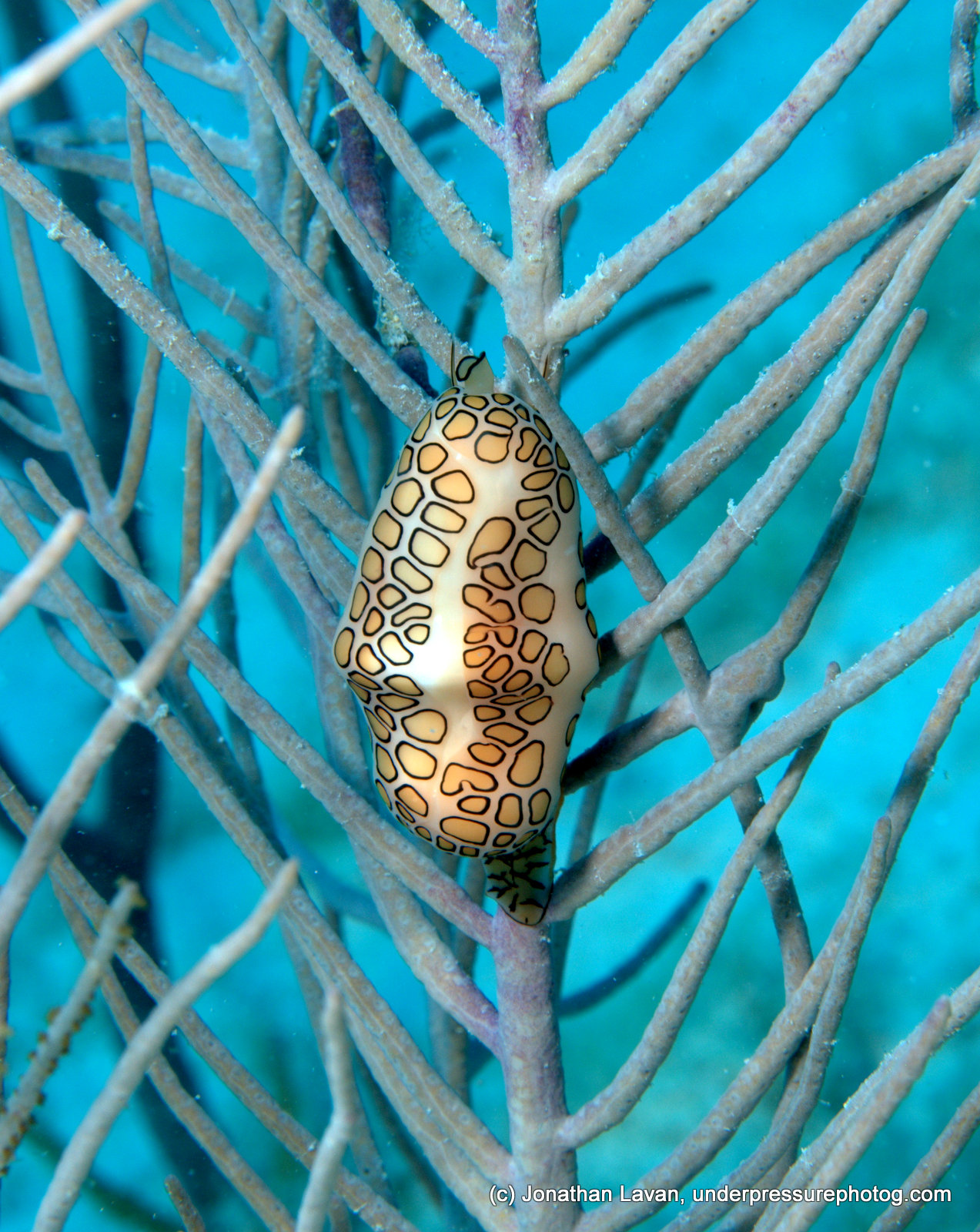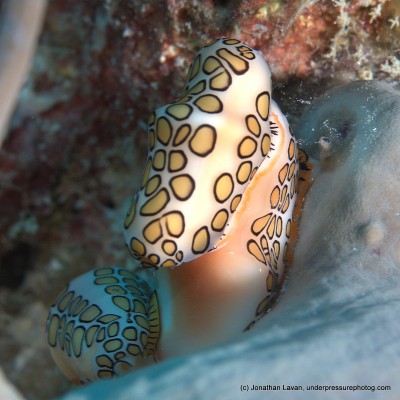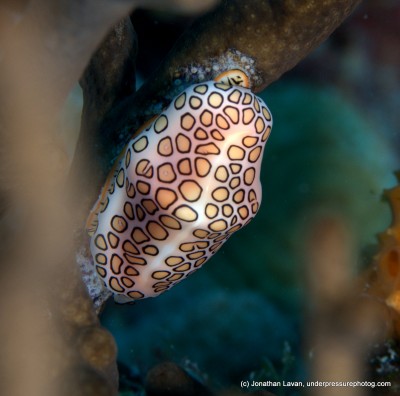Caribbean Creature Feature: Flamingo Tongues
Feb 24
Not What You Think They Are!
Some of the most visible, photogenic and beautiful creatures on the reef, Flamingo Tongues are snails (specifically Cyphona gibbosum in the phylum Mollusca (Mollusk) meaning “soft body” and the class Gastropoda (Gastropod) meaning “stomach foot”).
Most gastropods have the typical spiral-like shell we envision when we think of shells, while Flamingo Tongues and kin have a shell more reminiscent of a tongue being curled into a “c” shape. Many beginner shell collectors have taken the beautiful Flamingo Tongue shell only to find upon the death of the animal that the shell is a plain, uniform white color. The beautiful leopard-spotted pattern is the mantle, which is part of the animal’s foot and is extended out of the shell slit from both sides to cover the shell and act as camouflage. It can be extended and retracted at will. If you look carefully at the photo above you can clearly see both sides of the mantle where they have extended over the shell. You can also see the siphon at the top, used for breathing and the antennae, used for sensing food and predators. The end of the walking foot can be seen at the bottom of the shell.

Flamingo Tongues feed on gorgonians like Sea Fans and will be found in many different Caribbean habitats wherever gorgonians are present. In the second photo we find several Flamingo Tongues mating. During the breeding cycle you will find one or more males linking with the female in an attempt to mate. As you can see, the female must retract her mantle in order for the male to gain proper access. Once the eggs are fertilized the female will lay them on an exposed area of the gorgonian (photo 3) which has been made bare by the Flamingo Tongue’s radula (scraping tongue) while feeding. The eggs will hatch after approximately a week and half. The young are planktonic (feeding in the water column) for an undetermined amount of time and then will settle on the nearest gorgonian. Often, like many sea creatures, current and weather conditions may take planktonic Flamingo Tongues many miles from their birthplace.

For the beginning underwater photographer the Flamingo Tongue is the perfect subject. Stationary, colorful and almost always in ample light, it makes a great subject to spend some time shooting. Like many common names, it is not known why the Flamingo Tongue is called a Flamingo Tongue. It looks nothing like a flamingo or its tongue. Jaguar Snail would seem more appropriate as the spots are very reminiscent of a jaguar or leopard. It’s a cool name none the less, and yet another beautiful creature to be admired on a sunny day on the Caribbean coral reef.
By: Jonathan Lavan
Jonathan Lavan: The owner/operator of Underpressure Diving & Nature Photography is a citizen scientist and wildlife expert and has been SCUBA Diving for thirty years and taking photographs both above and below the water for about 10. He was pleased to have been made Volunteer of the Year for 2012 by the Reef Environmental Education Foundation. As a SCUBA Diver he has been a photographer, teacher and research associate for many different organizations.He is a staunch environmentalist and educator of young people. Jonathan is committed to making a difference on this planet through his images and his message of good will to all creatures. www.underpressurephotog.com.





Related Articles
Popular Articles